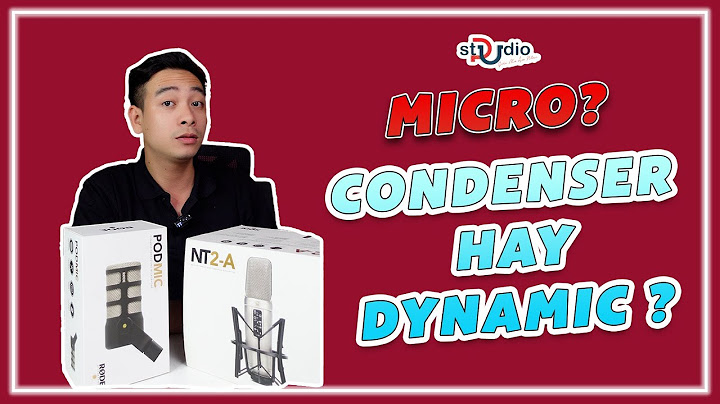If you’re in the market for a new clothes washer, you should seriously consider purchasing a front load washer for important benefits that are good for you, good for your clothes, and good for the environment. Show
What’s the Difference Between a Front Load Washer and a Top Load Washer?Back in the day, top load washing machines had an agitator, which is a central post that twists back and forth in a full tub of water and rubs against clothes to clean them. In the past decade or so, top load impeller washers, which have a low-profile cone or disc instead of an agitator, have become popular as a more energy- and water-efficient option compared to traditional top load washers. But out of all the options, front load washers are the most efficient. These washers have drums with side paddles that lift up the clothes and use tub rotation and gravity to tumble them through a small amount of water. They rinse clothes by repeatedly spraying high-pressure water on the clothes rather than soaking them in a full tub of water. ENERGY STAR certified front load washers use about 45% less energy and 50% less water than a top load agitator washer. Compared to a top load impeller washer, front load washers are still 25% more energy and water efficient. Furthermore, front load washers help save on drying time and energy by spinning clothes much faster than top load washers to extract more water out of clothes. To put this all into perspective, there are about 59 million top load clothes washers that are in use today in the U.S. If those were replaced with front load washers, we would save about 14.9 billion kWh of energy and 170 billion gallons of water EVERY YEAR. The energy that could be saved is equivalent to the electricity used by approximately 1.3 million homes annually. What Are the Benefits of Front Load Washing Machines?Front load washers have these other benefits: They clean better and are gentler on clothes. The agitator in a top load machine can be harsh on clothes and fabrics, causing more wear and tear and stretching of delicate fabrics. Washing your clothes with a front load washer can help lengthen the life of frequently washed items. Also, many front load washers can safely clean silk, wool, and other fabrics that usually require handwashing. They lead to less plastic pollution than top load washers. Microfibers and microplastics are tiny pieces of plastic yarn from synthetic fabrics (polyester, nylon, and fleece, for example) that make their way into drinking water systems and oceans as plastic pollution, resulting in increased plastic consumption by humans and marine life. Studies have shown that with their gentler washing action, less microfibers shed from synthetic fabrics, thereby being the more eco-conscious choice.1 They can clean more clothes at once. Front load washers typically have a larger drum than top load washers, and with no agitator taking up space, they can handle more laundry—between 15-20 pounds of laundry in 4.5 cubic feet of space. That means that more laundry gets cleaned in fewer loads! The next time you’re in the market for a new clothes washer, make the smart choice. First, look for the best front load washing machines in sizes that meet the needs of you and your family. Then, look for the blue ENERGY STAR label to get a model that is independently certified to save energy, water, and money! When it's time to buy a new washing machine, one of the critical deciding points is which is better a top-load or front-load washer. The answer depends on the features you desire, your needs, and your budget. Here's a side-by-side comparison of top-load vs. front-load washers' pros and cons—plus the benefits of a high-efficiency (HE) model. The Spruce Top-Load vs. Front-Load Washer Comparison Best for: Front-Load Washer Top Load Washer Appearance and Installation X X Cleaning Power X Repair and Maintenance X Water and Energy Use X Purchase Cost X Lifespan X Overview of Front-Load WashersThe drum of a front-load washer rotates horizontally to clean laundry with a tumbling motion. The dirty laundry is loaded through a door on the front that swings open to the side. This makes the washer easy to use for those in a wheelchair, those with short stature, or anyone who needs to be seated due to balance issues. If you are standing and of average height, a front load washer requires bending over to load or unload, similar to a dryer, unless it is placed on a raised support box. The Spruce / Laura Miller Pros of a Front-Load Washer
Cons of a Front-Load Washer:
Overview of Top-Load WashersThere are two types of top-load washers: the standard top-loader with a center agitator in the vertical drum and the high-efficiency model that has a disc agitator or impeller in the bottom of the drum. Both have a large door on top of the washer that rises and remains in a near-vertical position while the user adds/removes clothing or detergent. Top-load washers are easy to load and unload due to their waist-height opening for most users. They can be difficult to use for anyone with a shorter stature or confined to a wheelchair. Items can be added throughout the wash cycle in both standard and HE top-load washers. The Spruce / Dwyer Frame Pros of a Top-Load Washer:
Cons of a Top-Load Washer:
The Spruce / Krystal Slagle & Sanja Kostic Top-Load vs. Front-Load Washer: Major DifferencesAppearance and InstallationBecause top-load washers do not have a large door on the front, they have a smoother, sleeker look than front-load washers. Top-load machines must be placed side by side with a dryer unless you purchase a smaller compact stacking washer/dryer combo. Front-load washers' front doors have thick glass inserts that allow users to see the clothing, a good way to track the progress of the wash cycle. Front-load washers can be stacked with a dryer to fit into closets or small areas, though this arrangement is not always necessary. Best for Appearance and Installation: TieTop-load and front-load washers both tend to have a similar stark, industrial look. While not unpleasant, it is not considered a true home design element in the laundry room. All of the water, gas, and electrical connections will be the same for both top-load and front-load washers. Cleaning Power and Wear and Tear on ClothingTop-load washers twist and swirl clothing against paddles creating friction to remove dirt and stains. Most high-efficiency top-load washers use an impeller plate at the bottom of the washer tub to move clothes through the water and detergent. Standard top-loaders use a central agitator with paddles to spin clothing briskly, causing more wear and tear. Front-load washers tumble clothes against each other in the water to remove dirt and stains. Gravity works in the washer's favor, causing the clothes to tumble against each other in an up-and-down motion to scrub away stains similar to hand-washing. Best for Cleaning Power and Preserving Clothes: Front-Load WasherA front-load washer's gentle tumbling effect cleans better and creates less stress on the clothing. Second best: A top-load washer without a central agitator creates less wear and tear on fabrics. The Spruce / Ashley Craiger Repair and MaintenanceMaintaining a top-load washer requires little more than running a cleaning cycle. Motors on top-load washers are relatively easy to access and do-it-yourselfers can even make basic repairs. Front-load washers require more frequent cleanings that can be performed by homeowners but are best repaired by trained technicians. Best for Repair and Maintenance: Top-Load WasherBy far, top-load washers are less expensive to repair and easier to maintain than front-load washers. The Spruce / Jay Wilde Water and Energy UseTop-load high-efficiency machines use about 19 gallons of water per load. Front-load washers use around 13 gallons of water per load. A standard top-load washer uses, on average, about 41 gallons per load. Best for Water and Energy Use: HE Top-Load and Front-Load WasherBecause front-load and top-load high-efficiency washers use less water, they are more energy-efficient because they take less energy to heat the water. To purchase a washer that uses less water, look for the blue ENERGY STAR label models. And before you have your old washer hauled away to a landfill, consider recycling it to create new projects. Purchase CostIn the United States, high-efficiency washers, especially front-load machines, are significantly higher in price than a standard top-loader. High-efficiency top-load washers are less expensive to purchase than front-load models. Best for Purchase Cost: Top-Load WasherTop-load washers are typically less expensive to purchase. However, front-load washers offer larger drums that can reduce the number of laundry loads. It is best to consider purchase and operating costs when buying. The Spruce / Shannon Wells LifespanThe life expectancy of a standard top-load washer is 14 years. The average life expectancy of a high-efficiency front-load or top-load washer is 11 years. Best for Reliability: Front-Load WasherTop-load washers last longer than front-load washers on average. And, the repair costs for a front-load washer will typically be higher due to the many optional wash cycles and extra features. The Final VerdictFront-load washers cost more to purchase and require more maintenance than top-load washers, but they use less energy, provide better cleaning, and less wear and tear on clothes than top-load washers. FAQ
Why are front-load washers more expensive than top-load? A top-load washer uses "free" gravity to drain water from the drum and less complicated mechanisms to house the components. Front-load washers require a leak-proof door and additional pumps to remove water since the drum is horizontal, not vertical. Which lasts longer topDo front-load washers last longer than top-load? Not usually. The life expectancy of a standard top-load washer is 14 years. The average life expectancy of a high-efficiency front-load or top-load washer is 11 years. Is front load more expensive than topFront-loading washers cost more upfront than top-loading washers. Front loaders are generally more expensive to purchase, and they're more expensive to repair in the long run as well. However, as said above they definitely have something that make them worth the extra money. What is the most reliable washing machine brand?What brand of washing machine is most reliable? Whirlpool, LG, and Samsung are the most reliable brands of washers. Yale Appliance found that less than 7% of the sales of these units required servicing. J.D. Power also ranks Samsung and LG as highest in terms of customer satisfaction. Do front load washers leak?With a front load washer, a dirty or clogged drain pump filter can cause leaking during the drain cycle. Try cleaning the drain pump filter to remove any debris or lint, as well as residual water. |




















